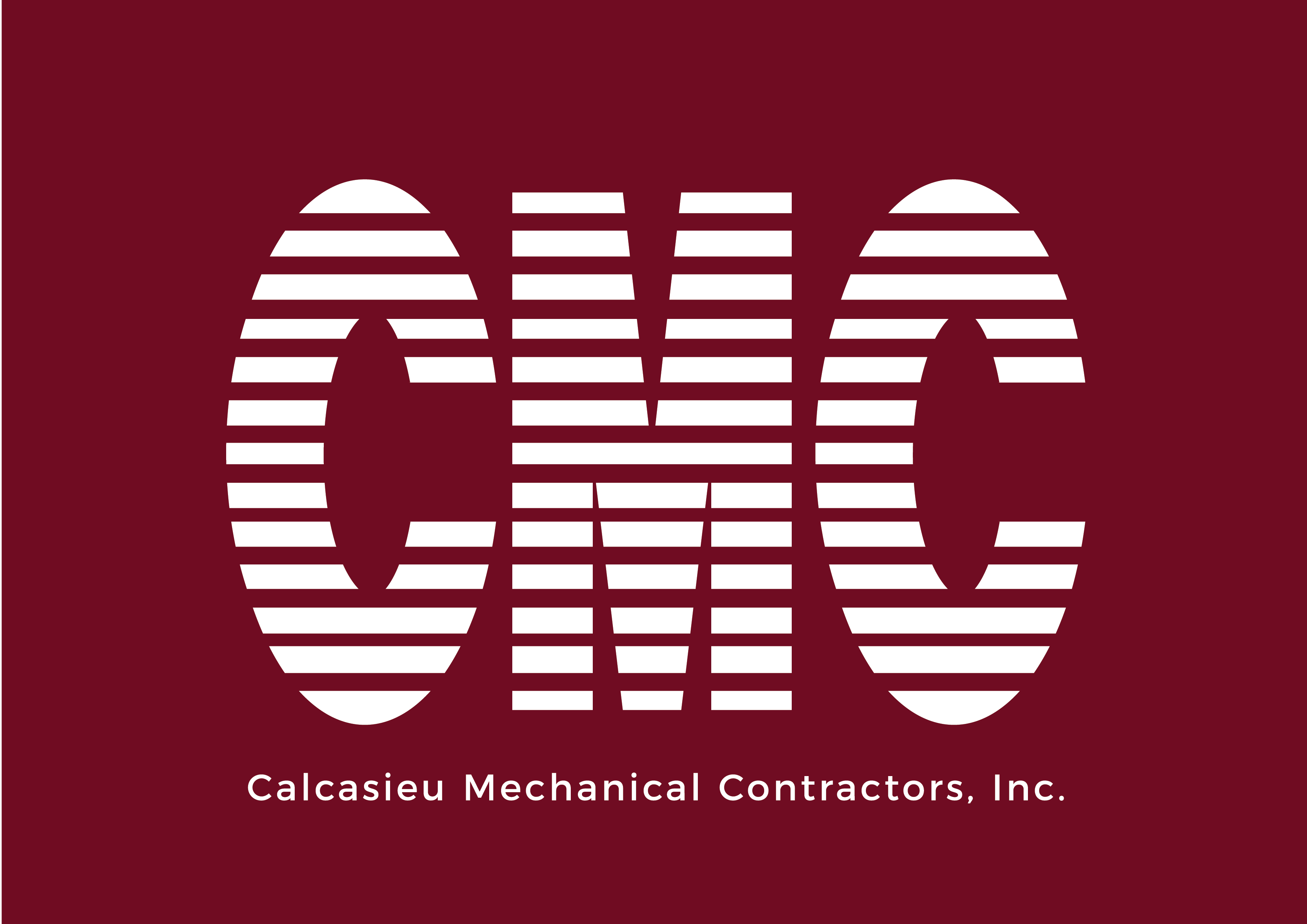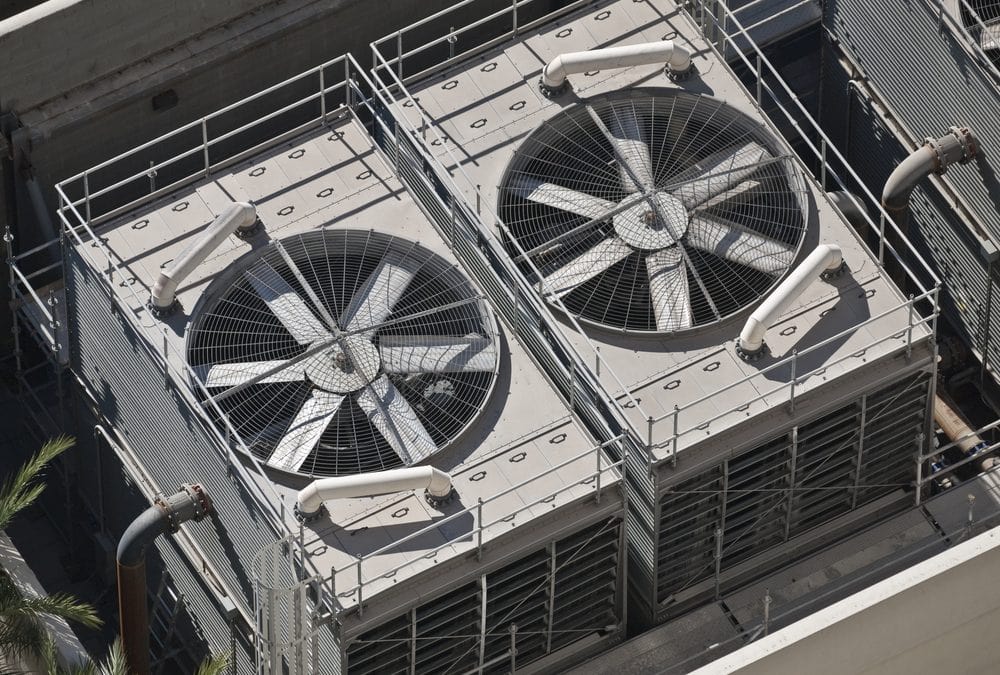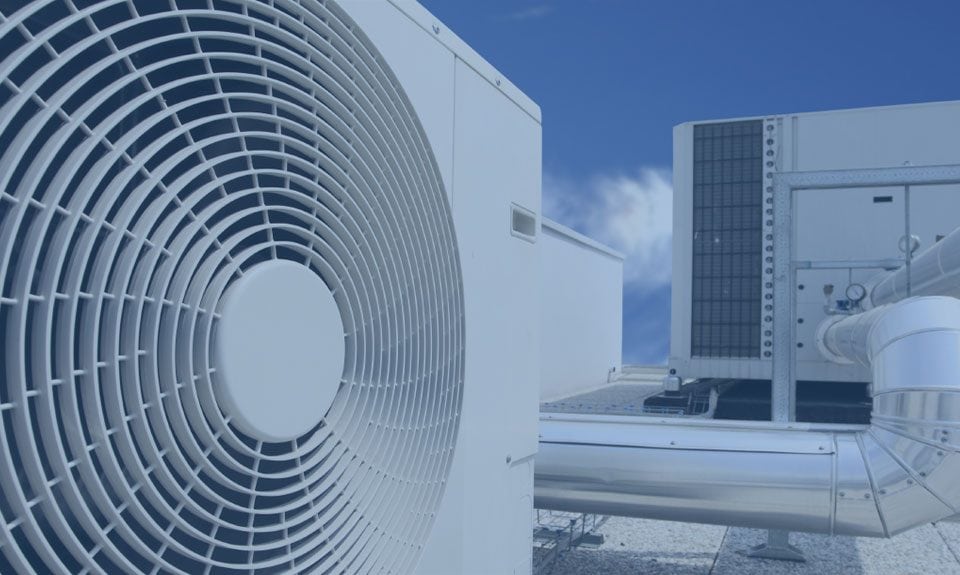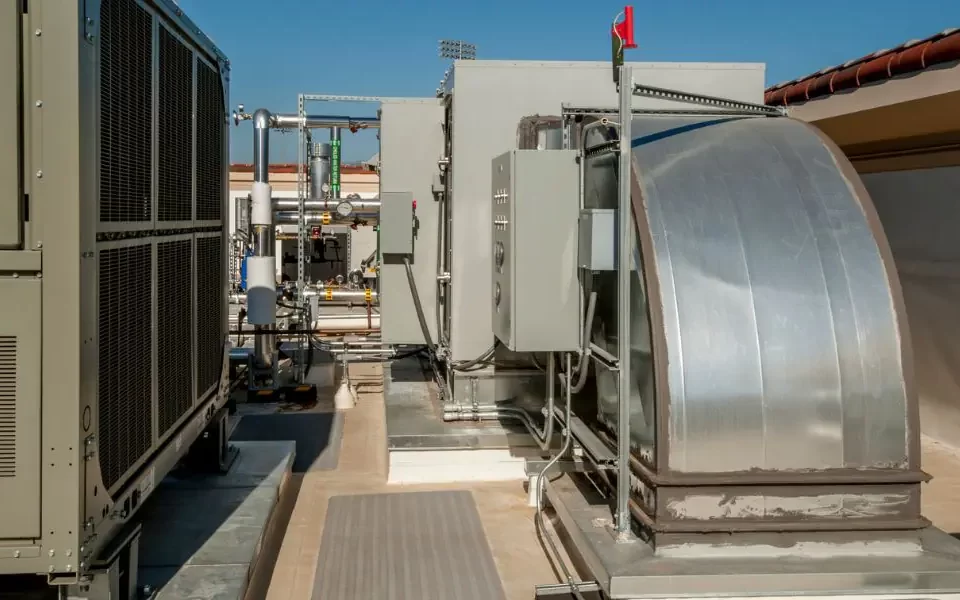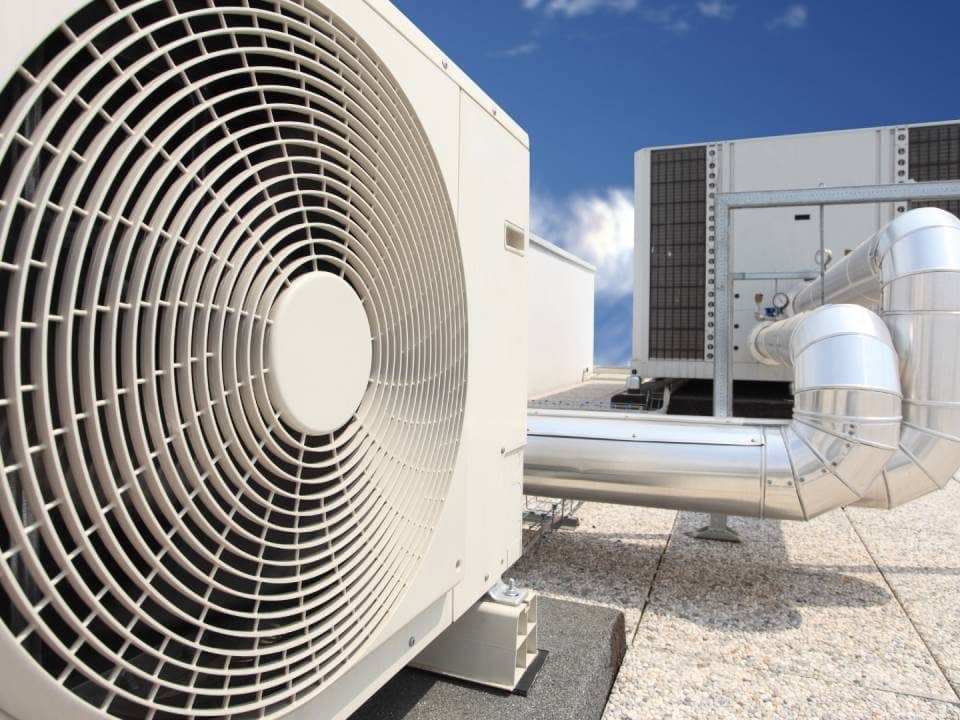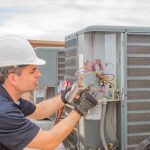
Commercial HVAC Installation: Your Path to Efficiency
August 14, 2023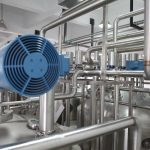
Unraveling the Secrets of Industrial HVAC: Understanding Its Function and Influence
October 17, 2023How does a commercial HVAC system work? This question might have crossed your mind if you’re involved in operating a large building or business facility. Understanding these systems is crucial to ensuring optimal comfort and energy efficiency.
An effective commercial HVAC system operates as an integrated network, controlling temperature, humidity, and air quality across different zones. It’s more than just heating or cooling; it’s about creating the ideal environment for people and processes within the premises.
The complexity of how a commercial HVAC system works can seem daunting at first glance. But things become clearer with some basic knowledge about its components and functions.
In this deep dive into commercial HVAC operations, we’ll demystify these complex systems without oversimplifying matters. You’ll gain insights that will help optimize your own system’s performance while keeping operational costs down.
Table of Contents:
- Demystifying How a Commercial HVAC System Works
- Types of Commercial HVAC Systems
- Why Commercial HVAC Systems Are a Smart Investment
- Economic Efficiency: The Dual Advantage
- Sustainability: A Step Towards Greener Businesses
- Better Productivity: Comfort Equals Performance
- Components of a Commercial HVAC System
- Maintenance Requirements for Commercial HVAC Systems
- The Predicament: Common Issues in Commercial HVAC Systems
- A Quick Guide: Troubleshooting Tips for HVAC Issues
- Solution at Hand: Professional Maintenance & Repair Services
- Professional Installation & Service for Commercial HVAC Systems
- FAQs in Relation to How Does a Commercial Hvac System Work
- Conclusion
Demystifying How a Commercial HVAC System Works
The perplexing realm of commercial Heating, Ventilation and Air Conditioning (HVAC) systems can be daunting. Despite its complexity, grasping the principles of a commercial HVAC system is not as daunting as it may seem.
Let’s decode this by breaking down the three key stages: modulating temperature through heating or cooling processes, air purification, and distributing conditioned air throughout your establishment via ductwork. This cycle is overseen by sophisticated control systems that adjust to external conditions and user preferences.
1. The Dance Between Heating & Cooling
The question arises: how does a system juggle between warmth during winters and summer coolness? It all boils down to its core components – furnaces for heating, typically powered by natural gas or oil burners, and refrigeration cycles for cooling, where a coolant absorbs indoor heat before releasing it outside through condensers.
This exchange of thermal energy helps maintain desired temperatures within your premises while ensuring optimal efficiency. During colder months, some units may use additional technology that extracts warmth from outdoor air to supplement indoor heating needs.
2. Purifying Your Indoor Environment
Beyond just controlling temperature levels inside your space, an HVAC system’s crucial function is improving overall indoor air quality. Various filters play an instrumental role here, capturing airborne pollutants like dust mites or allergens from circulating airflow before these particles infiltrate your workspace environment.
3. Distributing Conditioned Air Across Your Premises
Moving on to distribution involves propelling treated clean air through strategically placed ducts around the property for uniform dissemination. Regular maintenance, including mold inspections, ensures smooth operation without compromising comfort levels for occupants.
With each component playing its part under precise controls, you can create conducive environments that promote productivity while reducing energy consumption costs.
Ready to dive deeper into what makes up these intricate machines? Join us in our next section, ‘Components of a Commercial HVAC System,’ where we’ll be dissecting each individual element further.
Key Lesson:
Commercial HVAC systems aren’t as complex as they seem. They function in three stages: temperature modulation, air purification, and conditioned air distribution via ductwork. The system uses furnaces for heating and refrigeration cycles for cooling while filters ensure the circulated air is clean. Regular maintenance keeps the system running efficiently, promoting a productive environment and cutting energy costs.
A commercial HVAC system is not merely a device for controlling the temperature; it’s an intricate assembly of parts that work together to make an ideal interior atmosphere. It is a complex setup with multiple components that work together to create an optimal indoor environment.
The Command Center: The Thermostat
The thermostat serves as the nerve center of your HVAC system. Like the human brain sends signals to different body parts, the thermostat instructs other components when to activate based on the desired temperatures.
Air Handling Unit (AHU): The Heartbeat of Your HVAC System
The AHU acts as the heart, circulating conditioned air throughout your building. This crucial component houses fans and heating or cooling coils that help maintain comfortable indoor conditions.
Ductwork: Veins Carrying Conditioned Air
Like veins in our bodies that carry blood, ductwork forms a network for travelling heated or cooled air within a building.
Ventilation Equipment: Breathing Life Into Buildings
Ventilation equipment is similar to our lungs, inhaling fresh outdoor air and exhaling stale indoor air filled with contaminants such as dust particles and carbon dioxide.
Furnace & Heat Exchanger: Providing Warmth During Winters
The furnace takes over during colder months by producing heat through combustion processes involving fuels like natural gas or oil. Each furnace contains a heat exchanger that separates combustible gases from breathable interior airflow, ensuring safety and warmth.
It is important to remember that every HVAC system component requires regular maintenance to ensure optimal functionality and prevent sudden breakdowns that can cause discomfort among occupants.
Now that you have learned about the key components of commercial HVAC systems let’s delve deeper into the various types available and their respective applications in the next section.
Key Lesson:
Commercial HVAC systems are more than just climate controllers; they’re intricate networks of components working in harmony to maintain optimal indoor conditions. Think of the thermostat as the brain, sending activation signals based on desired temperatures. The Air Handling Unit is like a heart, circulating conditioned air throughout your building while ductwork acts as veins transporting this air.
Types of Commercial HVAC Systems
The commercial HVAC landscape is diverse and complex, with each system offering unique attributes suited for specific applications.
Single Split System
A popular choice for small commercial buildings, the single split system provides cost-effectiveness and independent control over each unit. If one unit malfunctions, the others continue to operate seamlessly.
Multi-Split System
In larger premises like office blocks or retail outlets, multi-split systems are favored. These systems connect multiple indoor units to a single outdoor component, resulting in improved energy efficiency thanks to sensors that adjust output based on requirements.
VRF And VRV Systems
Advanced HVAC systems such as Variable Refrigerant Flow (VRF) and Variable Refrigerant Volume (VRV) are gaining popularity in large-scale settings due to their superior performance, energy efficiency, and connected indoor units.
Ductless Mini-Splits
Ductless mini-splits are an innovative solution for heating and cooling without ductwork. They are ideal for additions or spaces where extending existing ductwork is not feasible.
In addition to these prevalent types, a wide range of specialized commercial HVAC options are available to meet specific business needs.
Now that we have explored various commercial HVAC setups let’s discuss the benefits of installing one for your enterprise.
Why Commercial HVAC Systems Are a Smart Investment
Installing a commercial HVAC system offers many advantages, such as improved air quality and consistent temperature control in large areas. It starts with improving air quality – these systems have filters that efficiently purify the indoor environment from pollutants.
Moreover, they ensure consistent temperature control across large spaces. Regardless of the season or external weather conditions, your workplace remains comfortable and conducive to productivity.
Economic Efficiency: The Dual Advantage
A well-functioning commercial HVAC system can be likened to an economic engine for businesses. Technological advancements give such systems superior performance while using less power, resulting in substantial energy savings over time.
“Lower operational costs aren’t the only financial advantage here; regular maintenance extends equipment lifespan too. This means fewer replacements or repairs – reducing capital expenditure.”
Sustainability: A Step Towards Greener Businesses
An environmentally friendly commercial HVAC installation lowers electricity consumption and reduces greenhouse gas emissions compared to older models. Thus, investing in modern HVAC units supports sustainability goals and helps reduce the carbon footprint significantly.
Better Productivity: Comfort Equals Performance
We often underestimate how much our physical environment impacts work output. With optimal temperatures and high-quality air devoid of allergens or pollutants, employees can better focus on their tasks without discomfort hindering productivity.
Understanding how a commercial HVAC system works is essential for businesses looking to create a comfortable and efficient indoor environment. In this guide, we’ll explore the various elements of a commercial HVAC system, discuss upkeep necessities and point out the advantages it can bring to your business.
Components of a Commercial HVAC System
A commercial HVAC system comprises several components that collaborate to maintain temperature, humidity and ventilation. These components include:
- Air Conditioning Unit: Responsible for cooling the air and removing excess moisture.
- Heating Unit: Provides warmth during colder months.
- Ventilation System: Circulates fresh air and removes stale air.
- Thermostat: Controls the temperature and settings of the HVAC system.
- Ductwork: Distributes conditioned air throughout the building.
Maintenance Requirements for Commercial HVAC Systems
To keep a commercial HVAC system running smoothly, regular maintenance is crucial. Here are some key maintenance tasks:
1. Routine Inspections
Regular inspections by experienced technicians help identify potential issues before they become major problems. Technicians check filters, coils, belts, blowers, and thermostats to ensure everything functions properly.
2. Cleaning
Cleaning the HVAC system is more than just an aesthetic concern. Dust and debris can accumulate and block airflow, reducing efficiency and potential overheating. Regular ductwork cleaning also helps maintain indoor air quality.
3. Filter Changes
Regularly changing filters is essential for proper air circulation and system efficiency. Neglected filters can restrict airflow, strain other components, and decrease performance.
By adhering to the maintenance needs, businesses can prolong their HVAC systems’ lifespans, increase energy efficiency and cut operational costs.
Note:
Leveraging professionals specializing in large commercial HVAC installations, like Calmech, ensures maximum return.
Key Lesson:
Commercial HVAC systems are vital for creating comfortable indoor environments, and understanding their workings is key. These complex systems include air conditioning, heating, ventilation, thermostats, and ductwork. Regular maintenance – including inspections, cleaning and filter changes – not only prolongs the lifespan but also boosts efficiency and reduces costs.
Commercial Heating, Ventilation, and Air Conditioning (HVAC) systems are complex machinery that require regular care. But what happens when they encounter issues? Let’s take a closer look.
“From thermostat malfunctions to unusual noises or reduced air flow due to blocked filters – these problems can lead to uncomfortable working conditions and skyrocketing energy bills.”
The Predicament: Common Issues in Commercial HVAC Systems
Poor indoor air quality is another common issue often linked to a lack of proper ventilation or dirty filters. These factors significantly affect the overall comfort inside your commercial building.
A Quick Guide: Troubleshooting Tips for HVAC Issues
If you notice irregularities like inconsistent temperatures or strange sounds from your commercial HVAC system, don’t ignore them. Taking action quickly helps prevent further damage and expensive repairs later on.
- An excellent first step is consulting the manufacturer’s guide for basic troubleshooting steps for your model equipment.
- This resource provides detailed instructions on resolving simple issues such as resetting thermostats or changing clogged filters. Here is an example of a general troubleshooting guide that might be helpful if you don’t have access immediately at hand.
Solution at Hand: Professional Maintenance & Repair Services
Maintenance performed by trained professionals ensures optimal functioning while prolonging the lifespan and reducing unexpected breakdowns. Professional technicians possess specialized knowledge about different models’ intricacies, enabling accurate diagnosis and efficient repair services, ensuring minimum downtime.
| The Importance Of Regular Maintenance In Ensuring Longevity And Optimal Performance Of Your HVAC System | |||
|---|---|---|---|
| Cleaning/Replacing Filters regularly: | Maintaining Indoor Coil: | Lubricating Moving Parts: | |
Key Lesson:
Don’t let HVAC hiccups hamper your business. Address odd sounds or inconsistent temperatures promptly to dodge hefty repair bills. Leverage the manufacturer’s guide for quick fixes, and when in doubt, call in the pros. Regular maintenance – think filter replacements and lubrication – is key to keeping your system humming smoothly.
Professional Installation & Service for Commercial HVAC Systems
Installing and servicing commercial HVAC systems professionally is essential for business comfort and productivity. Why? Because these complex systems play a crucial role in maintaining comfort and productivity within your business environment.
The Significance of Expert Installation
Think about what goes into an HVAC system: heating units, cooling devices, ductwork, filters, thermostats… the list goes on. Imagine putting all those pieces together without expert knowledge or experience—it’s a recipe for disaster.
Poorly installed components can lead to frequent breakdowns and inefficient operation that could increase energy costs over time. Professionals possess the qualifications and experience to ensure each component is correctly installed according to manufacturer guidelines.
Maintenance & Service: The Key To Longevity
A properly set up commercial HVAC system is not a ‘set-it-and-forget-it’ kind of deal—regular maintenance conducted by skilled technicians helps keep everything running smoothly while minimizing potential issues down the line.
An often overlooked but vital part of this regular upkeep includes chiller repair—a key aspect of any large-scale cooling solution. Neglecting chiller repair could result in significant operational inefficiencies or even complete system failure if left unchecked for too long.
Invest In Professionalism For Your Business Success
Hiring trusted professionals like Calmech is not just spending money—it is making an investment in your business’s future success.
In short, investing in installation and ongoing maintenance services with experts safeguards against unnecessary complications and ultimately saves money through enhanced performance across all facets linked with a successful business.
FAQs in Relation to How Does a Commercial HVAC System Work
Demystifying How a Commercial HVAC System Works
Discover how a commercial HVAC system works. Learn about its components, maintenance needs, and benefits for your business in our detailed guide.
How does a Commercial HVAC System Work?
A commercial HVAC system controls a building’s temperature, humidity, and air quality. It draws in outside air, conditions it to the desired settings, and circulates it throughout the premises.
Understanding the Step-by-Step Process of a Commercial HVAC System
The process starts with drawing in fresh air or recirculating indoor air. This air is then conditioned, either heated or cooled, as required. It is also filtered for cleanliness and humidified or dehumidified as needed. Finally, the conditioned air is distributed across rooms via ductwork.
The Six Types of HVAC Systems for Commercial Buildings
There are six main types of HVAC systems commonly used in commercial buildings. These include single split systems, multi-split systems, VRF/VRV Systems, heat pumps, chillers, and rooftop units.
How Commercial HVAC Differs from Residential HVAC
Commercial HVAC systems differ from residential systems primarily in scale and complexity. They are designed to serve larger spaces with more intricate requirements regarding airflow control and
Conclusion
Demystifying How a Commercial HVAC System Works
Unraveling the complexities of commercial HVAC systems, we’ve journeyed from understanding their basic operations to diving into their integral components.
We navigated through various types and applications of these robust machines.
Notably, the benefits they bring to businesses are significant – improved comfort levels, energy efficiency, and cost savings being just a few.
Maintenance is vital in ensuring optimal performance and longevity. A well-maintained system runs efficiently, reducing costs over time.
Troubleshooting common issues becomes less daunting with some knowledge at hand. Yet professional expertise often proves invaluable for intricate problems or large-scale installations.
The importance of expert installation regarding how a commercial HVAC system works cannot be overstressed. It’s not just about installing an HVAC unit; it’s about creating an environment conducive to business success.
If you’re looking for top-notch commercial HVAC services that prioritize your business needs, consider Calmech your go-to partner. Connect with us today, and let our team provide solutions tailored specifically for you – be it installation, service, or maintenance requirements! We specialize in delivering excellence every step of the way!

Hailing from the picturesque town of Lake Charles, Louisiana, Jim Blanchard stands as an exemplar in commercial HVAC installation and services. As President of Calcasieu Mechanical, he has leveraged his deep industry knowledge and innovative strategies to establish the company as a leading regional service provider. Under Jim’s leadership, Calcasieu Mechanical has expanded its portfolio of high-quality services and earned the trust and respect of businesses throughout Louisiana. The company’s commitment to excellence, reflected in its endeavors, stems from Jim’s dedication to ensuring every project meets and exceeds client expectations.
